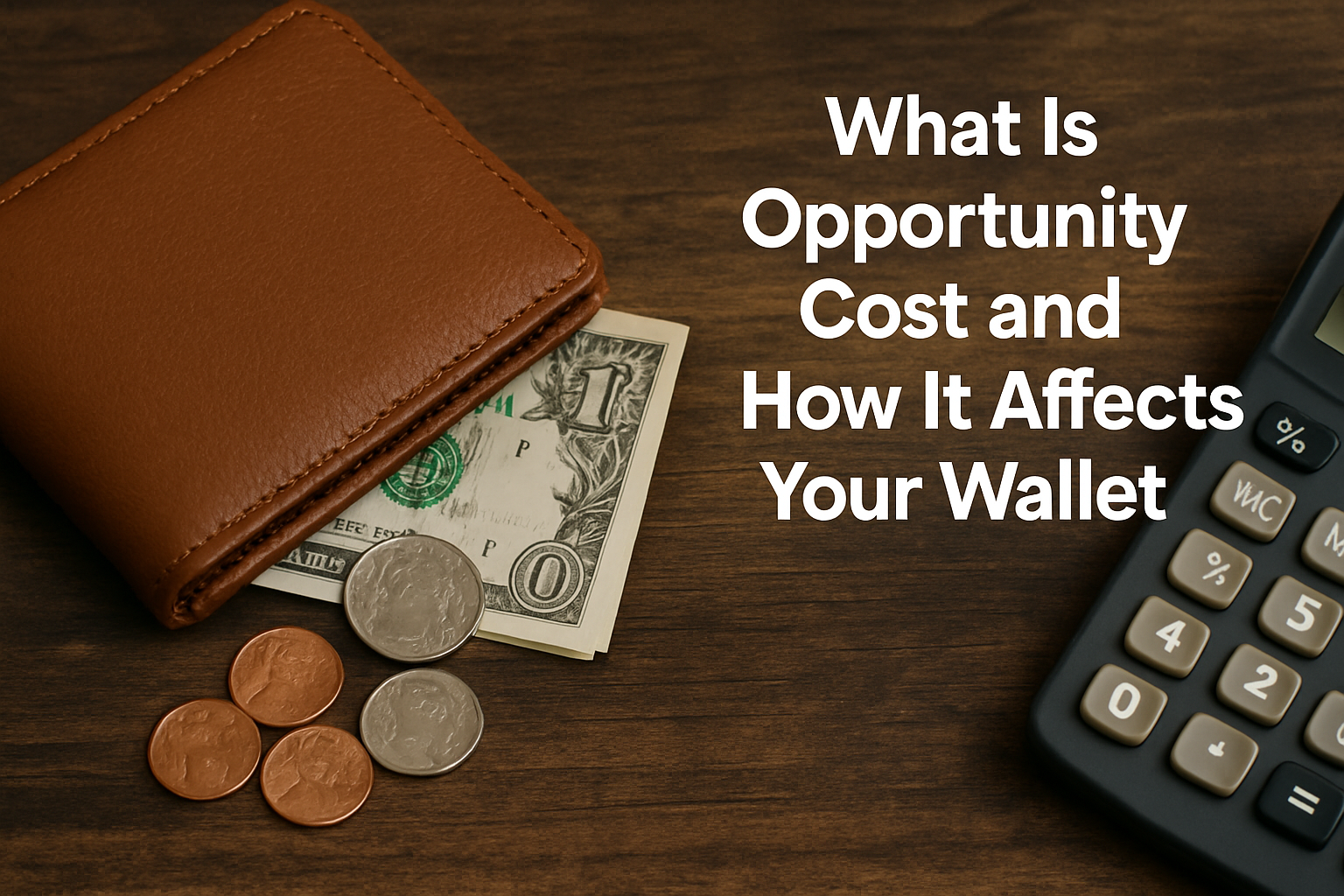Every day, you make choices about how to use your time, money, and energy. But have you ever stopped to think about what you’re giving up every time you choose one option over another? That trade-off is what economists call opportunity cost—and it has a major impact on your finances.
In this article, we’ll break down what opportunity cost means in practical terms and how understanding it can help you make smarter financial decisions.
Understanding Opportunity Cost
Opportunity cost is the value of the next best alternative you give up when you make a decision. It’s not always about money—sometimes it’s about time, experiences, or growth potential.
For example:
- If you spend $50 on takeout, the opportunity cost might be the groceries you didn’t buy—or the savings you could have contributed to your emergency fund.
- If you choose to work overtime instead of taking a course, you might gain money now but miss out on skills that could lead to higher income later.
Opportunity cost forces you to look beyond the immediate result and consider the long-term impact of your choices.
Why Opportunity Cost Matters in Personal Finance
Every dollar you spend has a purpose. If you don’t actively choose where it goes, you’re passively choosing not to invest, save, or allocate it toward something more meaningful.
Here are three key ways opportunity cost impacts your wallet:
1. Spending vs. Saving
Let’s say you receive a $500 bonus. You could:
- Buy a new phone
- Save it in a high-yield savings account
- Invest in stocks or ETFs
- Use it to pay off debt
Each option has a different return, and by choosing one, you give up the benefits of the others. Understanding that trade-off helps you make more informed choices.
2. Investing Early vs. Later
This is one of the clearest examples of opportunity cost in finance. When you invest earlier, your money has more time to grow through compound interest. Waiting even a few years can significantly reduce your total earnings.
For example:
- Investing $2,000 at age 25 could grow to over $15,000 by age 50 at 7% annual return.
- Waiting until age 35 to invest that same $2,000 might only grow to about $7,600.
The opportunity cost of waiting is nearly $7,400.
3. Everyday Purchases
Even small expenses come with trade-offs. Consider:
- Buying coffee daily vs. brewing at home
- Dining out three times a week vs. meal prepping
- Upgrading to a luxury car vs. driving your reliable used one
The opportunity cost of convenience or status might be a delayed vacation, reduced savings, or missed investment growth.
How to Apply the Opportunity Cost Mindset
1. Ask: “What am I giving up?”
Before spending money or time, pause and ask:
- “What else could I do with this resource?”
- “Will this choice bring me closer or further from my goals?”
This simple question can shift your mindset from short-term gratification to long-term thinking.
2. Prioritize Based on Value, Not Just Price
Cheaper doesn’t always mean better. Sometimes the more expensive option has greater long-term value. For example:
- Investing in quality shoes that last years vs. buying cheap pairs frequently
- Paying for a course that boosts your income vs. free content that doesn’t move the needle
Always weigh value against cost.
3. Review Big Financial Decisions Carefully
For major purchases (house, car, education), always compare the opportunity costs. What will you be sacrificing in terms of future income, flexibility, or time?
Create comparison charts, review future benefits, and talk to financial advisors when needed.
Final Take: Choose With Intention
You can’t avoid opportunity cost—it’s part of every choice. But when you understand it, you start making decisions that align with your bigger goals.
Managing your money isn’t just about avoiding waste—it’s about maximizing what you have. And by thinking about what you’re giving up, you’re more likely to use your resources wisely and build a stronger financial future.
